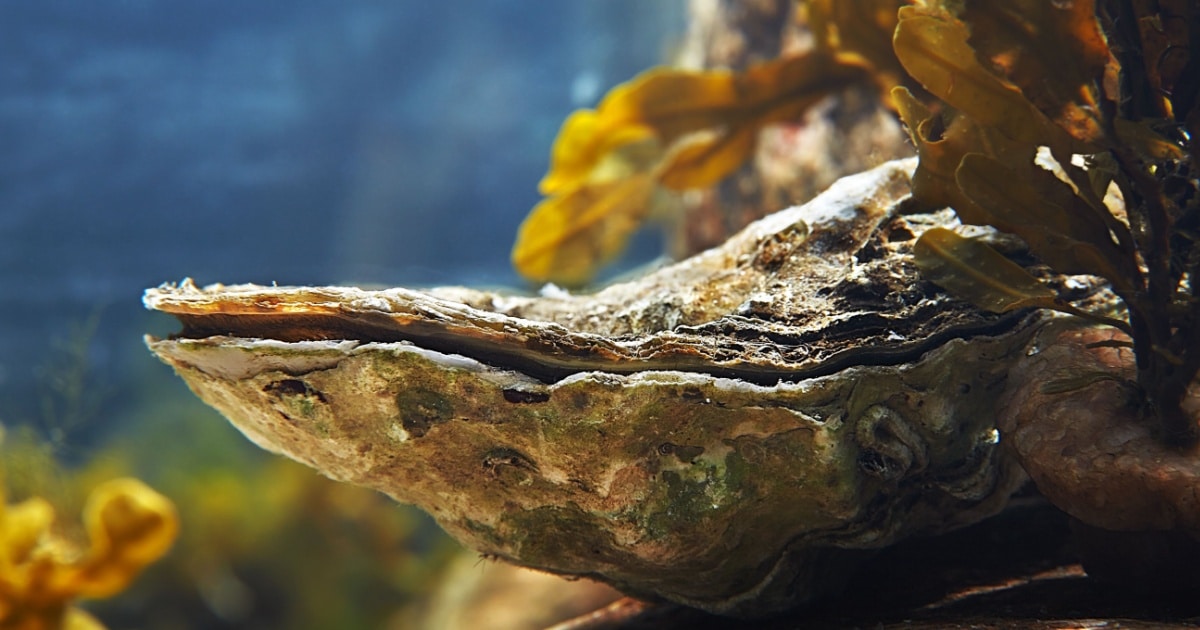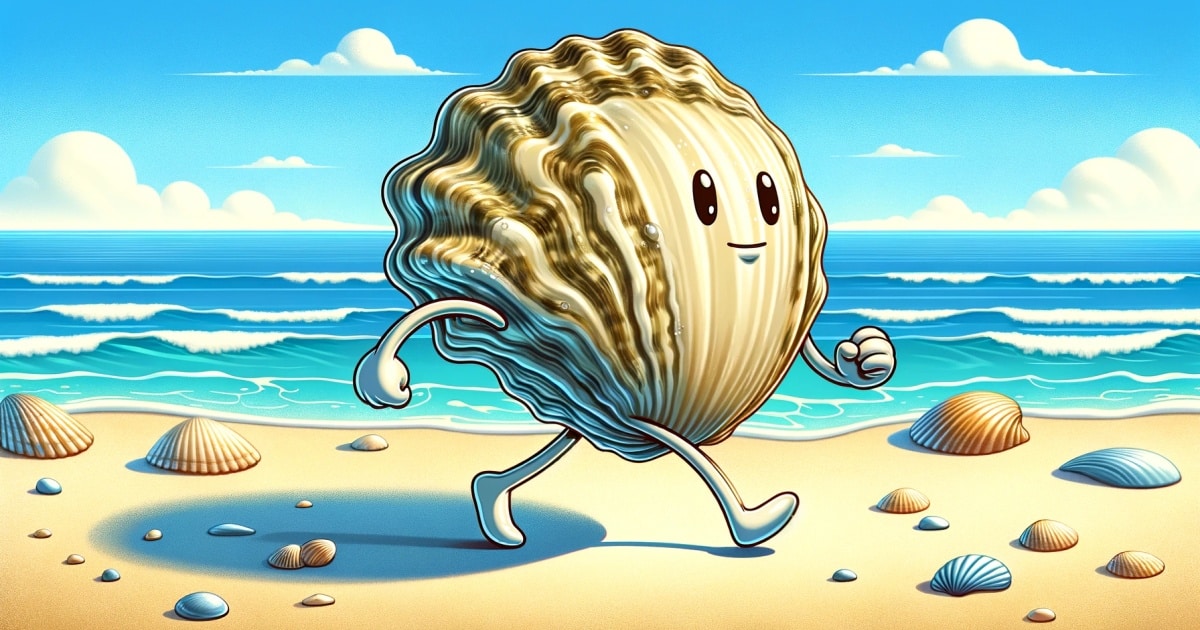The Mystery of Moving Oysters
Have you ever wondered, “Do oysters move?” At first glance, these marine creatures seem permanently attached to their cozy spots, never venturing far from where they’ve settled. Yet, the truth about oysters and movement is more fascinating than you might think. In this post, we’ll dive into the intriguing world of oysters, exploring not just if they move, but also how they manage this feat, especially during their early life stages. Join us as we uncover the secrets of oyster mobility and reveal some surprising facts about these shellfish.
Do Oysters Move? Yes & No
When we ask, “Do oysters move?” the answer is both yes and no. It’s a common belief that oysters are always stuck in one place, and for the most part, that’s true—especially for adult oysters. However, during the earliest days of their lives, oysters are quite the adventurers. Before settling down and becoming the stationary shellfish we’re familiar with, oyster larvae are free-swimming and actively move through the water. This period of mobility plays a crucial role in their survival, allowing them to find the perfect spot to call home. So, while adult oysters might not move from their chosen spot, they do experience a brief, nomadic phase.
How Do Oysters Move? A Closer Look at Larval Stage
After establishing that oysters indeed move, it’s fascinating to explore how this happens, especially since adult oysters are so well-known for being stationary. The secret to their mobility lies in their early life stage, known as the larval stage. During this time, oyster larvae are actually quite active and can swim freely in the water. They do this using tiny hair-like structures called cilia, which help them navigate through the water as they search for a suitable place to settle down and grow into adulthood.
This early life mobility is crucial for spreading oyster populations and ensuring genetic diversity. However, once oysters find a spot with enough food and the right conditions, they attach themselves to a solid surface and lose their ability to move. From this point on, they become the stationary creatures we’re more familiar with.

Settled Down: Adult Oysters’ Mobility
Once oysters settle down and attach themselves to a surface, their days of moving around come to an end. This transition from the larval stage to adulthood marks a significant change in their lifestyle. Adult oysters cement themselves to rocks, reefs, or even other oysters, and here they will stay for the rest of their lives. Though they no longer move from place to place, adult oysters can still open and close their shells. This movement is not for locomotion but is vital for feeding and respiration. They open their shells to filter feed, drawing in water to extract oxygen and food, then close them to protect themselves from predators and environmental changes.
This sedentary existence is a far cry from their early, free-swimming days as larvae. Yet, it’s during this stationary phase that oysters perform crucial ecological roles, such as water filtration and providing habitat for other marine life. While adult oysters may not move in the sense of changing location, their ability to open and close their shells is a subtle reminder of their more mobile beginnings.
The Fascinating Journey from Movement to Stillness
Oysters take us on a remarkable journey from their early, exploratory days as free-swimming larvae to their settled existence as adults. This transition from movement to stillness isn’t just a curious fact of their biology; it reflects the incredible adaptability and resilience of these marine creatures. Early in life, “Do oysters move?” is answered with their tireless search for the perfect home. Once found, they anchor themselves, becoming integral parts of their marine environment.
Understanding how and why oysters move sheds light on their complex life cycles and the vital roles they play in their ecosystems. While adult oysters may seem permanently fixed to one spot, their early mobility ensures the spread and diversity of oyster populations, contributing to the health and stability of marine habitats.
So, the next time you encounter an oyster, whether it’s on your plate or in the wild, remember the incredible journey it has undertaken. From a wandering larva to a steadfast adult, each oyster has a story, marked by a brief period of movement that eventually leads to a life of stillness and ecological significance.
FAQ: Oysters and Their Movement
1. Can oysters swim? Yes, but only during their larval stage. Oyster larvae can swim freely in search of a suitable place to settle. Once they attach to a surface, they no longer swim.
2. How long do oysters move before settling? Oyster larvae are mobile for about two to three weeks, during which they swim to find a suitable habitat. After this period, they settle and become stationary.
3. Do oysters ever move after they attach to a surface? Once attached, oysters remain in the same spot for life. They can open and close their shells but don’t change their location.
4. Why do oysters need to move when they are young? Movement during the larval stage allows oysters to disperse, find a safe habitat with ample food, and helps prevent overcrowding, ensuring their survival and growth.
5. Can adult oysters detach and reattach elsewhere? No, adult oysters cannot detach and move to a new location. Once they cement themselves to a surface during their juvenile stage, they are permanently fixed.
6. How do oysters contribute to their ecosystem? Oysters filter and purify water, provide habitat for other marine species, and help stabilize shorelines. Their stationary adult phase plays a crucial role in these ecological contributions.
7. Are all oysters stationary, or do some species move as adults? All adult oysters are stationary and do not move from their chosen spot. The ability to move is only present in the larval stage before they settle.
Explore More From T.L. Morris Seafood
If you enjoyed this post, you’re in for a treat! Dive deeper into seafood with some of my other articles that readers have loved:
- Why Do Oysters Taste Salty?– Discover why oysters taste salty, from the science behind their flavors to the unique ‘merroir’ of the Chesapeake Bay, in our latest post.
- When Are Oysters in Season? It May Surprise You!– Learn ‘When Are Oysters in Season’ and the best months to enjoy these shellfish, from the Chesapeake Bay to the Pacific Northwest.
- Are Oysters Good for You? The Comprehensive Guide– Discover the health benefits of oysters in our latest article: Are oysters good for you? Dive into the facts now!
- Which One Is Better? Mussels vs Oysters– Dive into the ‘Mussels vs Oysters’ debate: Discover key differences in taste, nutrition, and environmental impact in our comprehensive guide.
Stay connected and keep exploring! Don’t forget to subscribe for the latest updates and insights.

